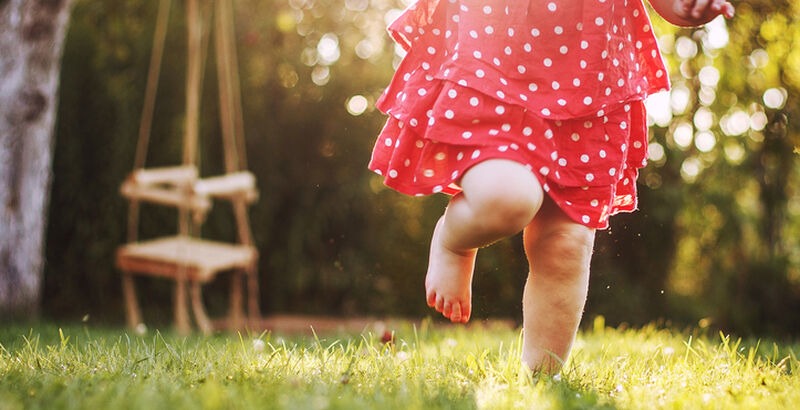What Is Grounding?
Walking Barefoot Can Help Us Conquer Anxiety
Getty/Lolkaphoto
Able to be practiced anywhere, by anyone, and at any time, grounding is an effective way to cope with anxiety.
Anxiety levels have been extremely high over the past few months, allowing many of us to seek out new modalities for managing stress. (Read “Dealing with COVID-19: 5 Ways to Control Coronavirus Anxiety” for more on coping with anxiety in the face of the pandemic.) In times of great uncertainty, we go inward to find what is certain within us. Feeling good is most important—and developing a daily practice to help us connect to calm is our utmost priority right now.
When we connect to well-being and practice self-love with care, we can transform our suffering into freedom. One of the most transformational tools for finding peace and calm is grounding (also known as earthing): directly connecting our body to the Earth to restore the electromagnetic balance we need to maintain optimal health and healing.
Grounding is practiced by walking barefoot outside or sitting in the grass. The Earth has an infinite supply of free electrons, so when a person is connected to it and grounded, those electrons naturally flow between the Earth and the human body, reducing free radicals and eliminating any static electrical charge.Just like the sun constantly provides us with important energy, nutrients, and vitamins, the Earth, too, is a source of subtle energy that provides important elements that contribute to optimum health.
Throughout practically all of history, humans have walked the Earth barefoot to connect to the Earth and work with its healing energy. Our ancestors slept on connective animal skins and fashioned those skins into footwear.
Although this concept is known by ancestries (including the Native American), Clint Ober, creator of The Earthing Movie, has done extensive research on the topic, discovering such benefits as reduced inflammation, chronic pain, jetlag, and menstrual and hormonal symptoms; improved sleep, energy levels, and blood pressure and flow; normalization of the body’s biological rhythms; relief of headaches and muscle tension; and accelerated recovery and healing—all helping us feel more calm by connecting to our well-being.
As a holistic approach to improving mental, physical, and emotional states of being, grounding can help support organ function. When I started grounding myself, the first noticeable effect improved sleep. Not only was it much easier to fall asleep, but I didn’t toss and turn as much. Now, I wake up feeling calm and balanced.
The first thing that happens when we’re grounded is we feel a discharge as the electrical static in the body drains away and breathing becoming easier and more fluid. Other effects, like calmness and increased blood flow, happen over time. The more consistent the earthing practice, the more the benefits.
Of course there are physical benefits, but emotional grounding is actually the most important piece of this, generating more clarity, focus and appreciation for all of life and the balance of everything in its right time and place.
How to Practice Grounding
Step 1: Go outside—into the backyard or a nearby park—and sit, walk, or stand on grass, sand, dirt, etc., for at least 30 minutes a day for optimal benefits, but connecting just three to five minutes will help you feel better and connected to instant calm.
Step 1 alternative: If you are not in a position to ground yourself outdoors right now, you can still connect with nature. You could sit by a houseplant, open your windows to get fresh air, or even invest in grounding products, such as mats, blankets, or shoes. You can also use grounding essential oils ( with cypress, sandalwood, or ginger)or crystals such as smoky quartz or black tourmaline (since it’s idealfor clearing and protecting the aura from negative influences).
Step 2: Breathe in and out; allow yourself to take in all of the beautiful aspects of nature as you embrace its healing capacity. Feel the blades of grass between your feet. Look up to the sky. Let the sunlight fall over you, and smell the fresh air. Listen for the birds. As you use all your senses, you become more present and connect to the Earth even more.
Step 3: Connect to gratitude. This is a perfect time to be thankful and connect to all that is well in your life. As you continue to breathe in and out, you will start to feel better, and you can use this moment to focus on appreciation. Send love to the Earth, to your community, to the world, to all that is well. You can say a prayer or meditate in the moment to further ground you and connect to the collective.
No matter what or how grounding is completed, taking time each day to practice ground will help combat blues and connect us back to what truly matters, our connection with self and the magnificent Earth.


